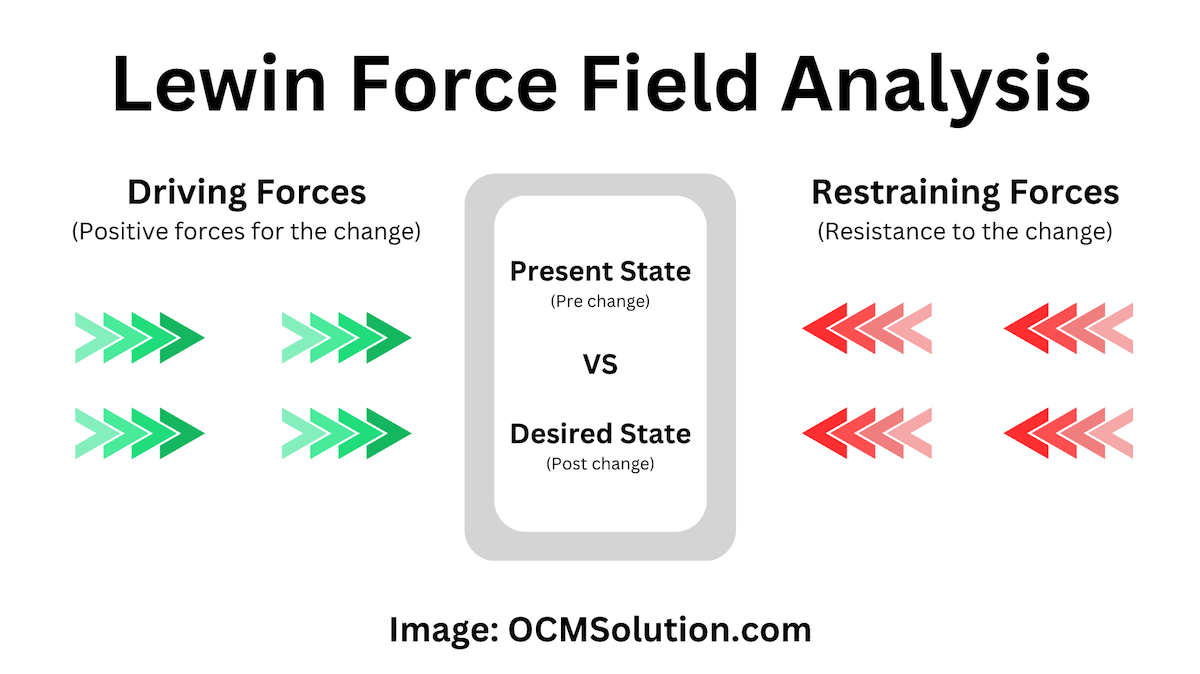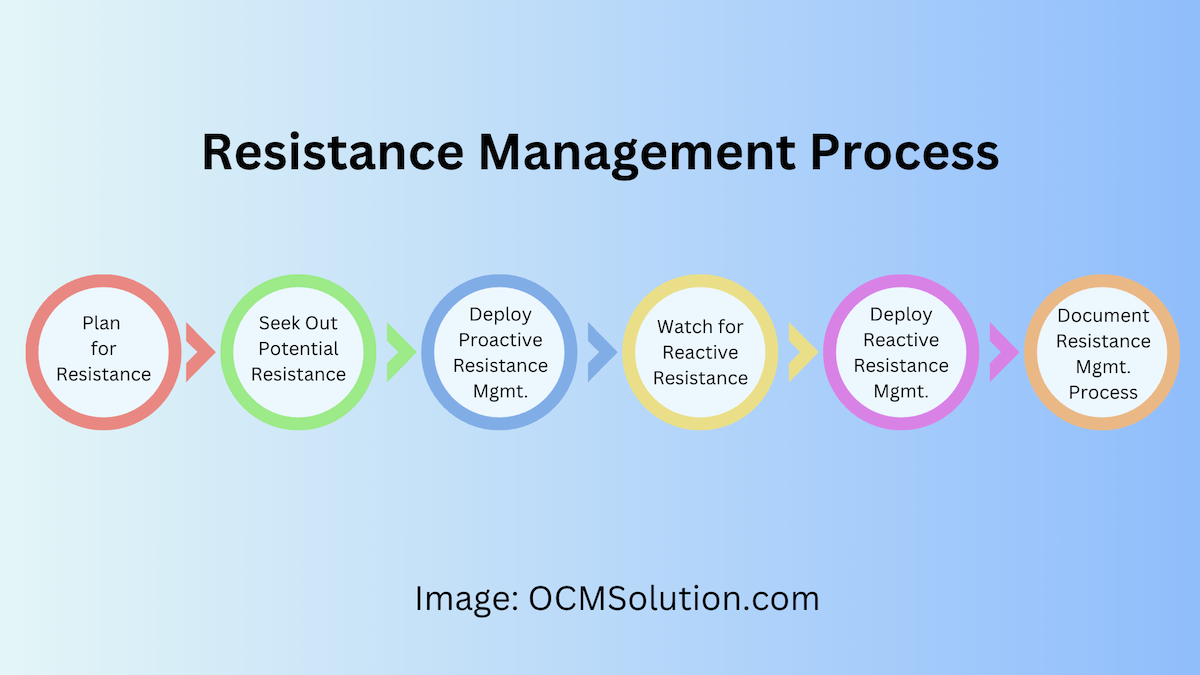Mastering Change in 2024: A Comprehensive Guide for Overcoming Organizational Resistance
Change is the heartbeat of progress, the engine that propels organizations forward into the future. Yet, beneath the surface of every transformative initiative lies a formidable adversary: resistance to change. Like shadows in the night, change resistance lurks, ready to thwart even the most well-intentioned endeavors. In the ever-evolving landscape of modern business, mastering the art of change resistance management has become a non-negotiable skill for leaders and change agents alike.
Welcome to this ultimate guide, where we delve deep into the labyrinth of human psychology, why people resist change, organizational dynamics, and strategic foresight to uncover the keys on how to manage resistance to change. Brace yourselves, for the journey ahead is as enlightening as it is empowering.

Story Highlights
|
The Power of “Why?”: Uncovering Resistance to Drive Successful Change
In any workplace, implementing change often faces resistance from employees and leadership. This resistance is a natural reaction to disruption, but it can jeopardize the success of a project if not managed effectively. To navigate this challenge, change management teams must anticipate and address resistance to change management head-on.
Don’t Get Sidelined! Mastering the Tightrope of Change
Resistance to change can manifest in various forms, such as reluctance to participate in training or overt vocal challenges during meetings. Recognizing and understanding these signs is crucial for effective management. The Kurt Lewin Model illustrates the balance between positive driving forces for change and restraining forces of resistance, emphasizing the importance of mitigating resistance for project success.
Resistance can stem from both individuals and organizational cultures. Employees may resist change due to fear of the unknown, past negative experiences, or personality conflicts with change drivers. Organizations, meanwhile, may resist due to entrenched traditions, rigid structures, or disagreement among leaders about the proposed changes.
The Transformation Key to Unlocking Successful Change
To prevent resistance, proactive measures are essential. This includes assessing the impact of change, communicating a clear vision, addressing past grievances, and involving employees in the process. Despite proactive efforts, some resistance may still arise, requiring reactive strategies such as listening to feedback, addressing concerns, and providing support to allay fears.
Managing resistance to change is integral to effective change management. By understanding its root causes, implementing proactive measures, and deploying appropriate strategies, organizations can overcome resistance and drive successful change initiatives.
Secrets of Change Mastery: Unveiling the Power of Support Networks
Effective change management also relies on support networks, including leadership coaching and change champions, to facilitate acceptance and adoption. By leveraging these networks and deploying a range of strategies, organizations can navigate resistance and ensure successful change implementation.
Do you have any questions or feedback about change resistance management? We’d love to hear from you. Reach out here.
Tips for Dealing with Resistance to Change in the Workplace
When you introduce a change to employees and leadership in an organization, there is bound to be some push back from those who are resistant to the idea of a change.
The fact that there is resistance is not surprising at all, because resisting change is human nature. What the change management team needs to do is be fully prepared for dealing with resistance to change and be ready with resistance management strategies.
Managing resistance to change in an organization involves understanding the types of things employees may feel when they’re faced with a change in their daily work life. Knowing how to manage change in the workplace is often the difference between project failure and project success.

Strategies to Overcome Resistance to Change
If the employees in an organization don’t accept a change of process or procedure and don’t change behaviors to support the project requirements, then the organization as a whole can’t change.
Because resistance to change can be very personal and emotional, not everyone handles managing resistance to change in an organization with the same success. It takes several “people” skills, such as:
- Listening
- Communicating
- Empathizing
- Reassuring
- Negotiating
If you’re using change management best practices and have set up leadership coaching, then you don’t have to go it alone when it comes to how to manage change in the workplace.
Leadership coaching includes teaching strategies to overcome resistance to change so that you have a support team of supervisors and managers that can assist with resistance mitigation.
If you’ve been wondering about the best ways for dealing with resistance to change, we’ve got several tips for you inside this OCM Solution article.
We’ll also include two free downloads at the end:
- Overcoming Resistance to Change PDF
- Overcoming Resistance to Change PPT
See Also: Everything You Need to know About Adaptability in the Workplace
What is Managing Resistance to Change?
Managing resistance to change includes watching for resistance and then deploying strategies to overcome resistance to change that can help move a person from a resisting state into a supporting state.
What does resistance look like?
It can take several forms, and some are easier to spot than others. You can’t be successful with managing resistance to change in an organization until you know how to proactive identify resistance to change.
Here are some forms that resistance can take:
- Refusing to participate in training for the new change process
- Complaining to colleagues about the change project
- A change in demeanor to being more negative after the project has started
- Vocal challenges to the change project during meetings
- Actively trying to derail the change project
- A manager telling staff that they don’t have to adopt the new processes
Dealing with resistance to change is a critical part of change management. When resistance is left unmanaged, then it can cause problems and a cause a change project to fall short of expectations or fail completely
One of the change models that illustrates the importance of knowing how to manage change in the workplace is the Kurt Lewin Model of change management. This model includes the Lewin Force Field Analysis, which describes two different forces in a change project:
- Restraining forces (resistance to the change)
- Driving forces (positive forces for the change)
For a change project to be successful and get the users and organization to change from the present state to the desired future state, the positive driving forces need to be stronger than the restraining forces.

Managing resistance to change in an organization eliminates (or greatly reduces) the restraining forces so the change project can be accomplished successfully.
What Makes Employees and Organizations Resistance to Change?
Both employees and organizations as a whole can be resistant to change. For example, an organization’s culture can be very tradition-oriented, making it difficult for people to let go of old ways of doing things and adopt new processes.
But change is necessary for an organization if it wants to stay innovative and competitive in an ever-evolving world. That’s why organizational change is needed both to adapt to changing environments and to optimize and become better.
How to manage change in the workplace includes understanding some of the common factors that make employees and organizations resistant to change.
Why Organizations Resist Change:
- They’re attached to the corporate culture
- Rigid organizational structure
- They’re invested in the current way of doing things
- Principals disagree about the change
Why Employees Resist Change:
- Hard to let go of routines and habits
- Afraid the change will make their life worse
- Bad experience with a past change.
- Personality conflicts with those driving the change
- Don’t understand why things are changing
- Fear they won’t be able to adapt
Don’t Miss: Finding the Best Change Management Jobs
Contact us if you have any questions or feedback about this guide on how to manage resistance to change. Also, let us know if you have any managing resistance to change PDF examples that you would like listed on this page to help other change management practitioners.
How Can You Prevent Resistance to Change?
When it comes to managing resistance to change in an organization, you have to realize that some resistance you can head off at the pass and prevent, other resistance is going to be inevitable, and you won’t be able to prevent it.
In our downloads, Overcoming Resistance to Change PDF and Overcoming Resistance to Change PPT (available at the end of the article), we discuss reactive strategies to overcome resistance to change.
The process you take while managing resistance to change in an organization includes six key steps:
- Plan for resistance
- Seek out potential resistance
- Deploy proactive resistance management
- Watch for reactive resistance
- Deploy reactive resistance management
- Document the resistance management process

Preventing resistance to change altogether would involve proactive resistance management.
What does that look like? Here is an example below.
A change manager performs an impact assessment and finds out that one particular department will be impacted by the change more than others. They’ll need to move offices, uprooting their normal day-to-day work environment.
People that are most impacted by a change are most likely to be resistant to that change. So, instead of waiting for that resistance to materialize, the change manager puts proactive measures in place for dealing with resistance to change in that department.
This includes inviting the team members of that department to have input on the new office space they’ll be working in and reassuring them that all their equipment and furniture will be moved for them. Regular visits to see the space being put together are also planned to help them feel excited about the move, rather than dreading it.
Tips for Preventing Resistance to Change
While you can’t control how everyone reacts to a change or ward off all resistance, you can prevent some resistance by knowing how to manage change in the workplace proactively.
Here are some ways you can try to prevent resistance to change proactively. The first tips involve identifying where resistance may occur, and the second set of tips are about managing resistance to change proactively.
Identifying Where Resistance May Occur:
- Assess the impact of the change, so you know who is going to be impacted the most.
- Evaluate employees using a stakeholder analysis to gauge past experience with change.
- Meet with managers and supervisors to get input on how their teams may feel about the change.
- Set up a Change Champions Network and discuss ways to identify potential resistance and report it back.
- Use employee surveys before the project begins to get a feel for the response to the change.
Managing Resistance to Change Proactively:
- Communicate a vision about the goal and mission for the change to remove the “Why is this happening?” resistance potential.
- Communicate with individuals and departments to allay fears about the change.
- Address any past bad experience with change and explain how this one will be different.
- Continue to check in with managers and change champions regarding potential resistance.
- Create ways to involve everyone in the change project to give them reasons to feel excited about the change.
What about managing resistance to change in an organization after resistance has already manifested?
The second group of tips for dealing with resistance to change will address resistance that’s already manifested despite your efforts to proactively prevent resistance.
We’ll cover these strategies to overcome resistance to change in the next section.
Related: What is Transformational Leadership?
7 Strategies to Overcome Resistance to Change
Managing resistance to change in an organization effectively involves understanding that there will be all types of resistance that you’ll run into. Some may seem logical, some more personal, but all of it is important and needs to be resolved.
Some resistance to change may involve anger about the fact that things are changing, another type may be related to the fact that the change itself is unwelcome, such as a merger that’s going to result in layoffs.
Because there are so many different types of resistance to change, you need to be ready with several strategies for managing resistance to change in an organization. Some strategies may work better for certain types of resistance than others.
1. Seek Out & Listen to Feedback: You want to invite feedback to help you uncover resistance that may not be expressed vocally in a meeting. Listen to feedback so you can properly address concerns.
2. Communicate & Address Concerns: Proactive communications help resolve resistance that comes from being in the dark about aspects of the change project. You also want to communicate one-on-one to address specific concerns.
3. Invite Participation: You can resolve certain types of resistance by inviting people to participate in the change process. Either invite them to be in the Change Champions Network, to attend a committee meeting, or celebrate a milestone achievement.
4. Use Your Support Networks: Two support networks that good change managers set up are through leadership coaching and change champions. Leverage these networks to help you reach people who may be more receptive to someone they know and trust.
5. Deploy Hard Facts & Data: Some people need to be convinced that a change is good by the data. Put together information that backs up exactly how the change will benefit the organization, their department, and them personally as well.
6. Provide Support to Allay Fears: Fear of being thrown into a new situation without the support and expected to perform their job just as efficiently is a key reason for resistance. Mitigate this by providing a thorough employee training plan and support during and after the change to let employees know you have their back.
7. Negotiate Acceptance If Other Methods Fail: If you have a stakeholder that can put a serious barrier up for your change project if they continue resisting, you may have to resort to negotiation if all else fails. This could include offering an incentive of some kind or adjusting the project in a way that they accept.
Popular Article: Change Management vs Project Management | What You Need to Know
Downloads: Overcoming Resistance to Change PDF & PPT
OCM Solution has developed an easy checklist for you to use in managing resistance to change. It includes our OCM Solution process for resistance management, typical reasons for resistance to change, and strategies to overcome resistance to change in the workplace.
Overcoming Resistance to Change is available as a downloadable PowerPoint or PDF document. Click the links below to download the document of your choice.

Downloads:
Overcoming Resistance to Change PDF
Overcoming Resistance to Change PPT
Conclusion: Guide to Managing Resistance to Change in an Organization
With just about any type of change project introduced, you’re going to run into resistance from the employees in an organization.
Resistance to a change in routine, behaviors, and ways of doing things – especially if it wasn’t that person’s idea – is a natural part of human nature and a natural part of change management.
Managing resistance to change in an organization comes with the territory of managing organizational change projects, which is why resistance management is a basic tenant of change management best practices.
There are several strategies to overcome resistance to change, including both proactive and reactive strategies. In some cases, these tactics can help you ward off resistance, and in others, it will help you transform resistance to support after resistance has manifested.
It’s a good best practice to consider the Lewin Force Field Analysis when considering how to manage change in the workplace because it provides a simple picture of your goal – creates more driving (positive) forces while reducing the restraining (resisting) forces.
Ultimately, using proven strategies for managing resistance to change and leaning on your support networks can help you mitigate most resistance so your change project can move forward successfully.
Note: Content on OCM Solution's ocmsolution.com website is protected by copyright. Should you have any questions or comments regarding this OCM Solution page, please reach out to Ogbe Airiodion (Change Management Lead) or the OCM Solutions Team today. OCM Solution was previously known as Airiodion Global Services (AGS).
Images: stock.adobe.com





